CLOTHING CARE – camel active CARE GUIDE
Durable clothing is important to us. After all, it is part of our adventures, our travels, and our lifestyle. How many moments you can experience in your favorite pieces, however, also depends on the proper care of the clothing. You will receive the most important tips and tricks on the subject of clothing care, sustainable washing and the meaning of washing symbols in our camel active Care Guide. So that you can enjoy your favorite pieces for as long as possible!

Why is the care of our clothing so important?
When it comes to the longevity and sustainability of our garments, proper care is essential. Because even sustainable clothing only really becomes sustainable when we treat it carefully and wear it for as long as possible. Regular airing, a reduction in washing temperature, a low spin speed and air drying not only protect our environment, but also the textiles themselves. By dealing with them in a sustainable and responsible manner, we can extend the life of our clothing and save resources.
THE MOST IMPORTANT CARE AND WASHING INSTRUCTIONS FOR DURABLE CLOTHING

Wash less:
Sustainable washing means washing less. Because not every wear requires a wash. Simply air out your clothing after use and consciously decide when a wash is really necessary.

Sort laundry before washing:
Wash your clothes preferably with similar colors to avoid discoloration.
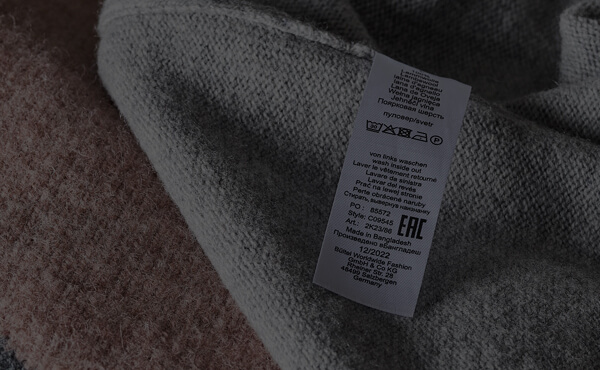
Observe washing instructions:
Each garment is individual. Before washing, be sure to observe the sewn-in care label with all important care instructions to maintain quality, shape and color.

Gentle drying:
Dry the clothes in the fresh air. This is not only particularly gentle, but also energy-saving. Make sure not to leave the clothes in the washing machine for too long after washing.

Store clothing correctly:
Robust fabrics such as cotton or denim can be hung up without any problems. Wooden or fabric hangers are suitable for this. Elastic fabrics should be stored lying down to preserve the shape.

Repair instead of throwing away:
If your clothing is damaged, try to repair it. Small repairs can significantly extend the lifespan and are often easy to do yourself.
Washing symbols and their meaning: Reading and interpreting washing instructions correctly
To ensure that textiles do not suffer damage during washing, drying or ironing, care instructions are indispensable. These can be found on the sewn-in care label of our clothing. But what exactly do the care symbols and washing instructions mean? We will show you which care symbols you can find in our camel active clothing and what they mean exactly.

- Do not wash: Items marked in this way must not be washed.
- Hand wash: These items should be hand washed. Use mild detergent/wool detergent or set wool wash program on the machine
- 30 °C Easy care: For easy-care items, reduce the amount of laundry and fill the drum only up to half. Set the appropriate washing program. Due to the risk of creasing, do not spin or only spin briefly.
- 40 °C Easy care: For easy-care items, reduce the amount of laundry and fill the drum only up to half. Set the appropriate washing program. Due to the risk of creasing, do not spin or only spin briefly.
- Gentle drying: Drying in the dryer possible. Choose a gentle treatment method with reduced load and treatment duration.
- Do not dry in the tumble dryer: Item cannot withstand drying in the tumble dryer.
- Do not iron: This item must not be ironed.
- Do not iron hot: Iron with a maximum temperature of the iron sole of 110 °C - 1 point on the iron
- Iron moderately hot: Iron with a maximum temperature of the iron sole of 150 °C - 2 points on the iron
- Professional dry cleaning: We recommend having this part professionally cleaned with perchlorethylene (P).
- Do not dry clean: This garment is not suitable for professional cleaning. It must not be treated with solvents, as the clothing or individual components are not solvent resistant.
Making Stain Removal Easy
Whether it's during a lunch break with colleagues, outdoors in nature, or at home while applying makeup - a moment of inattention and unsightly stains adorn our favourite piece. To prevent these from stubbornly settling in the clothing, quick action is required. Often, simple home remedies help to treat the stains locally.
It is important to pay attention to the type of fabric being treated, as some materials are more sensitive than others. Even though home remedies are generally gentle in their effect, it is advisable to carry out a test on an inconspicuous part of the garment before application to ensure that the remedy does not damage or discolour the fabric. Since each garment is unique, the specific washing instructions on the care label of the garment should always be observed.
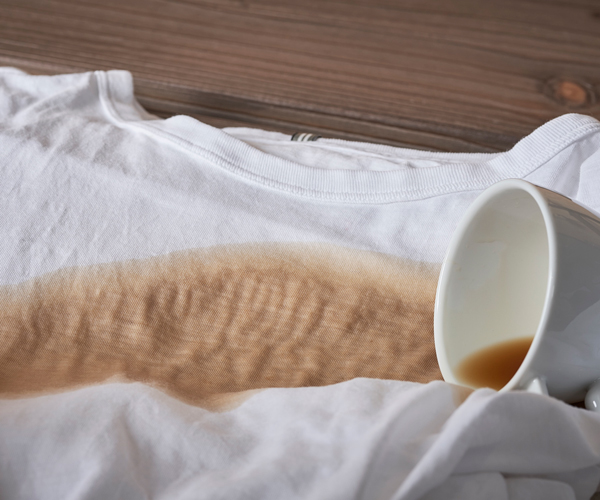
Removing Coffee Stains
A quick coffee to go in the morning and we spill the pick-me-up on our top. The following tips can help:
- Mineral water is particularly effective for coffee stains on clothing, as the carbonic acid dissolves the discolouration in the fabric.
- Simply pour carbonated water onto the fresh coffee stain and dab it off with a clean cloth. For less sensitive fabrics such as cotton or coffee drinks with milk, a little hand soap can be used to remove grease residues from the textile.
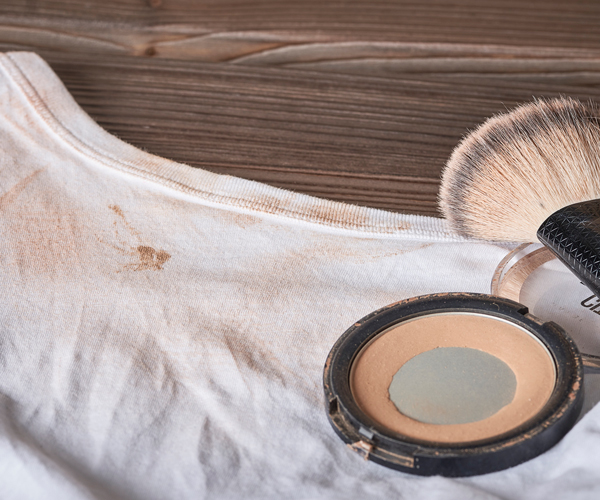
Removing Make-Up Stains
Make-up stains can be quite stubborn. Since most make-up is greasy, the stains are often not removable with water alone. To gently remove the stains from the clothing, we have the following tips:
- If the stain is fresh, gently dab it with a clean paper towel to absorb excess make-up without working it into the fabric. Avoid rubbing the stain, as this will cause the make-up to penetrate deeper into the fabric.
- Baking soda or hairspray are suitable for removing make-up. Spray some hairspray on the stain, let it work for a short time and then gently dab it off with a clean cloth. Alternatively, baking soda can be mixed with water to form a paste and applied to the stain. Let it work for a short time and then rinse out with cold water. Baking soda is particularly suitable for white textiles.
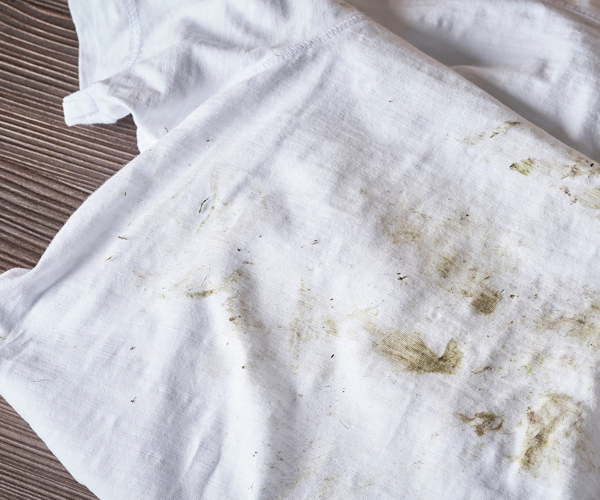
Removing Grass Stains
Grass stains are best treated with gall soap or vinegar essence.
- Simply dilute the vinegar with some water and gently apply the mixture to the stain. Let it work for about 10 to 15 minutes before rinsing the fabric in cold water.
- Gall soap is also suitable for effectively removing grass stains. Moisten the gall soap slightly with water and rub the grass stain with it. Afterwards, the gall soap must be left to work for about an hour before it is washed out with lukewarm water.
- Afterwards, the clothing can be washed in the washing machine according to the instructions on the care label.
Storing Clothing Correctly
In general, garments should be stored in a cool, dry and dark place to prevent fading and damage from sunlight.
Robust fabrics such as cotton or denim can be stored on hangers without any problems. Shirts, blouses, dresses and skirts should also be hung to avoid wrinkles. Wooden or fabric hangers as well as padded hangers for delicate fabrics are best suited for this. Wire hangers should be avoided if possible, as they can damage the fabric of the clothing.
Elastic fabrics such as cardigans, knitted dresses and other fine knitwear can easily deform or stretch on hangers. It is better to store these flat to maintain their shape and avoid stretching at the shoulders.
If seasonal or rarely worn garments are to be stored for a longer period of time, it is also advisable to wash the clothing before storing it to minimise the risk of moths and to prevent damage to the fabric from possible stains and residues.
CARE AND WASHING INSTRUCTIONS FOR DIFFERENT MATERIAL
Not all fabrics are the same. Each material is unique and should be cared for according to its individual requirements to ensure its longevity. We will show you our most frequently used materials at a glance and how you can best care for and wash them.

How to care for Denim?
Denim is a durable and robust material that lasts a long time with proper care. Ideally, jeans should be washed rarely to maintain the material's shape and color. Instead, it's enough to air out the jeans after wearing them. If washing is necessary, zippers and buttons should be closed beforehand. Then turn the jeans inside out to prevent them from fading. A temperature of 30 degrees is perfectly sufficient. Denim fabric should not be dried in the dryer as it can shrink. It's best to dry your jeans lying flat in the fresh air.
Important: Since denim fabric can fade easily, no local stain treatment should be carried out.

How to care for Polyester or Polyamide?
Caring for polyester is usually straightforward, and most garments are simply machine washable. A gentle cycle at a maximum of 40 °C with mild detergent is best. Due to the fabric's quick-drying properties, it can easily be dried in the fresh air. Since synthetic fiber textiles hardly fade, care must be taken to wash similar colors together, especially during the first wash.
However, when washing garments made of polyester or polyamide, broken synthetic fibers and microplastics can be released and enter the wastewater. Some of this plastic can even be detected in our oceans. To prevent this, you should use a laundry bag when washing, which ensures that the microfibers are caught and do not enter the water. This way, you protect the environment, your health, and your clothing.

How to care for Knit and Wool?
Caring for knitwear and woolen garments requires special attention to maintain quality and durability. Hand washing is often the best method to clean them. If the washing machine is used, the wool wash program with cold water and a suitable detergent is suitable. Knitwear is elastic, so it can lose its original shape when hung up. To prevent them from warping, knit or wool clothing should be dried flat, preferably on a towel. Wool clothing should also be aired out after each wear. Pilling can be removed with a special wool comb.

How to care for Linen?
The natural fiber from flax is particularly pleasant in summer because it is light, cooling, breathable, and robust. In addition, linen is surprisingly dirt-repellent. If there are stains on the clothing, wash your linen outfit ideally in the gentle or delicate cycle at a low spin speed to avoid damaging the fabric. Linen needs a lot of water, so only load the washing machine halfway. After washing, gently shape the garment and let it air dry on a wooden hanger. Linen has a natural crease effect that characterizes the fabric. However, you can iron out extremely noticeable wrinkles or hang the clothing in the bathroom while showering. The moisture optimally removes the creases.
CARE TIPS FOR OUTDOOR AND FUNCTIONAL CLOTHING
Especially in autumn and winter, jackets are our daily companions and protect against wind and weather. It can happen that the clothing gets dirty during all kinds of outdoor activities. All tips and tricks for washing and impregnating winter jackets, rain jackets, and co can be found in our blog post. We have also summarized the most important points for you here.
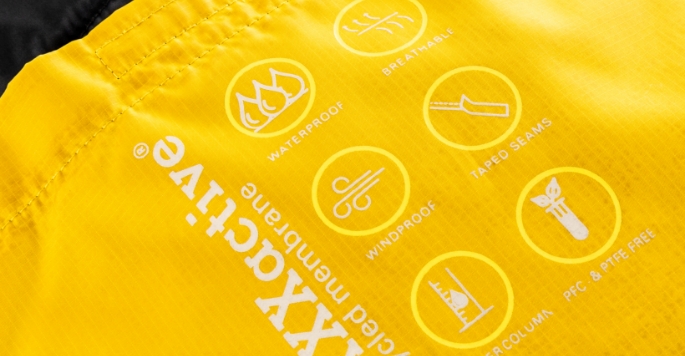
How do I wash Rain Jacket & Co?
Whether it's a quilted jacket, carbon jacket, wool coat, or waterproof teXXXactive® jacket, for all jackets, too frequent washing harms both the garment and our environment. Therefore, thorough airing is the first step when the jacket could use a refresh.
If a wash cycle is finally necessary, the following tips should be observed:
- Follow the care label: The small label inside the jacket tells you how the jacket should be washed and cleaned.
- Close zippers and turn the winter jacket inside out for washing if possible. Jackets should generally be washed individually as they have a very large volume and the washing machine could quickly be overloaded.
- Use a liquid detergent – for functional jackets, preferably one with membrane-preserving function like those for sportswear. Fabric softener should not be used if possible, as it can clog the pores, especially in breathable jackets.
- In most cases, you can choose a gentle wash cycle at 30 degrees. This way, your jacket is washed gently and energy-efficiently.
For more information on washing different types of jackets, click here.
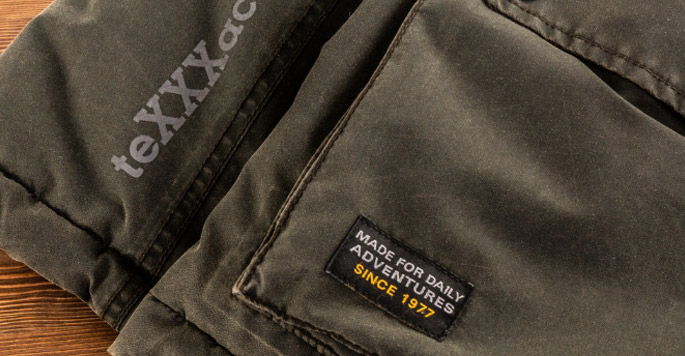
Impregnating Outdoor Jackets
To keep your jacket permanently waterproof and dirt-repellent, it's important to refresh the jacket's impregnation from time to time. For re-impregnation, you can either use a wash-in impregnation or a spray-on impregnation. But before that, you should thoroughly clean the jacket according to the care label to remove dirt and other residues.
When using a spray-on waterproofing agent, make sure to apply it in a well-ventilated area or outdoors. Spray evenly and from an appropriate distance onto the clean and dry jacket. Some waterproofing agents require heat to work properly. In this case, you can briefly put the jacket in the dryer at a low temperature.
The wash-in waterproofing can simply be added to the detergent compartment. Choose a gentle wash cycle and the waterproofing will be washed into the fabric. However, make sure not to use any extra detergent, as this would reduce the waterproofing performance.
PROPERLY CLEANING AND CARING FOR BAGS AND BACKPACKS
Bags and backpacks also need the right care as faithful outdoor companions.
The general rule also applies here: Before using a cleaning agent, it should be tested in an inconspicuous place to ensure that it does not cause discoloration or damage. Regular cleaning can prevent accumulations of dirt and stains and make your bags and backpacks look well cared for. However, the care routine should always be adapted to the specific material to make them last as long as possible. Here are our best tips for different materials:

Leather Bags
- Remove dust: Use a soft, dry cloth or a soft brush to remove dust and dirt from the surface.
- Spot cleaning: For small stains, a damp cloth with mild soap or leather cleaner is suitable.
- Deep cleaning: Regular application of leather care products helps to moisturize the leather. Apply the care product with a soft cloth and follow the care instructions on the product.
- Storage: Leather bags and backpacks are best stored in a cool and dry place. Direct sunlight or extreme temperatures should be avoided.
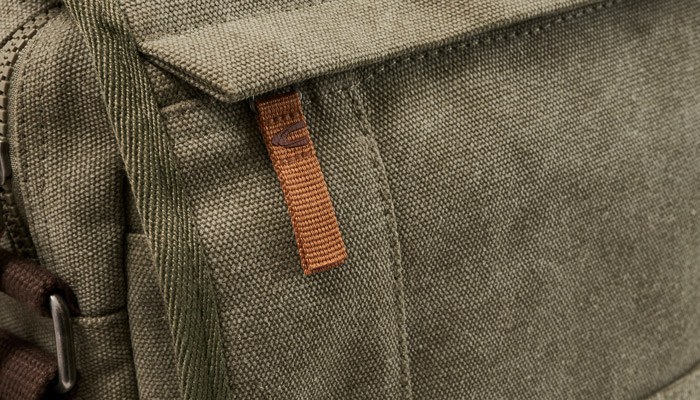
Canvas Bags
- Spot cleaning: Use a soft brush or cloth to remove loose dirt. For stains, mix mild soap with some water and gently clean the affected area.
- Air drying: Always let backpacks and bags made of canvas air dry. A dryer should not be used to avoid damage or shrinkage of the bags.
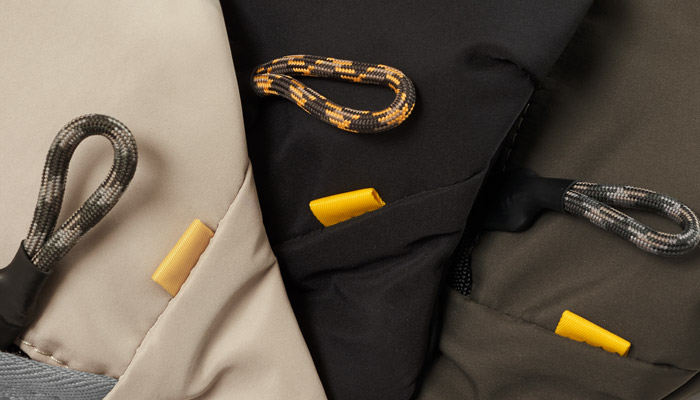
Taschen aus synthetischen Materialien
- Surface cleaning: Wipe the surface with a damp cloth or sponge and use a mild soap or detergent if necessary.
- Avoid chemicals: Do not use acetone, alcohol or other strong chemicals as they can damage the material.
- Thoroughly drying: After cleaning, let the bag air dry completely before storing it. A dryer should not be used to avoid damage or shrinkage of the bags.
SHOE CARE: THE BEST TIPS FOR LEATHER, SUEDE, FABRIC AND CO
We have already experienced countless adventures with our shoes. All they need now and then is a little care. With the right tips, your companions will stay in top shape and won't be inferior to new shoes in terms of functionality. You can read in our blog post which shoe care products are suitable for leather, suede, fabric and co and how to best clean and care for sneakers and boots.

MORE FAQ’S ON THE TOPIC OF CLOTHING CARE
On most materials, local stain removal is no problem as long as you perform a test on an inconspicuous part of the garment before application to ensure that the agent does not damage or discolor the fabric. For particularly sensitive parts where no local stain removal should be performed, we point this out again on the product's label. This is often the case with products that have been dyed with a special color process. The label then has a "Garment Dyed" note.
If clothing can bleed, as is the case with denim fabrics, for example, no local stain treatment should be carried out in principle!
You can find out how to best treat different stains on your clothing here.



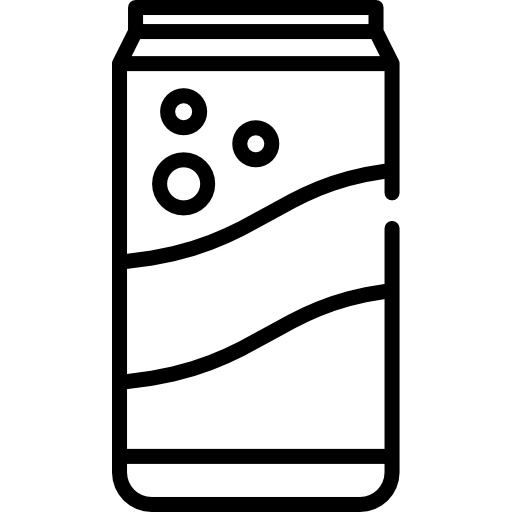
.png)

.png)